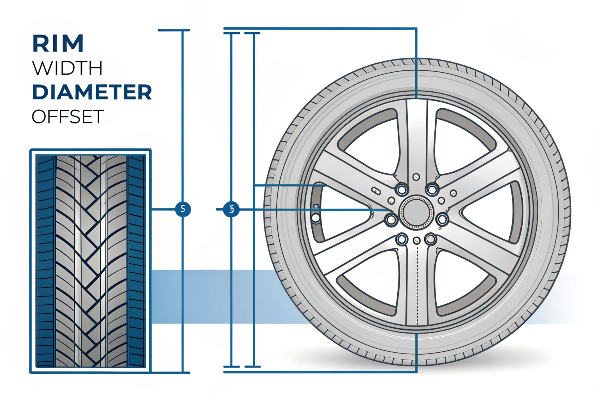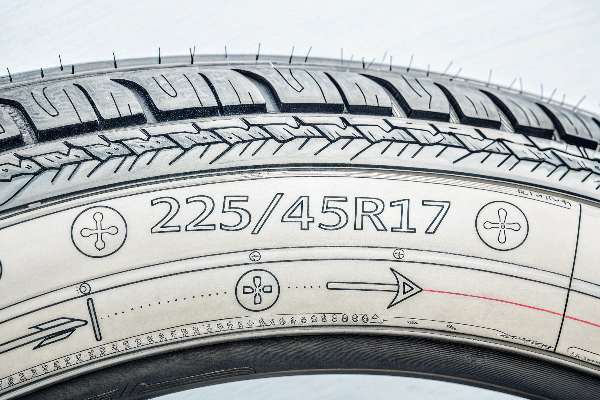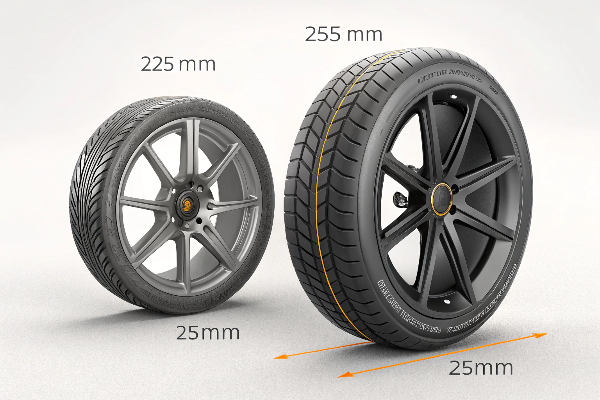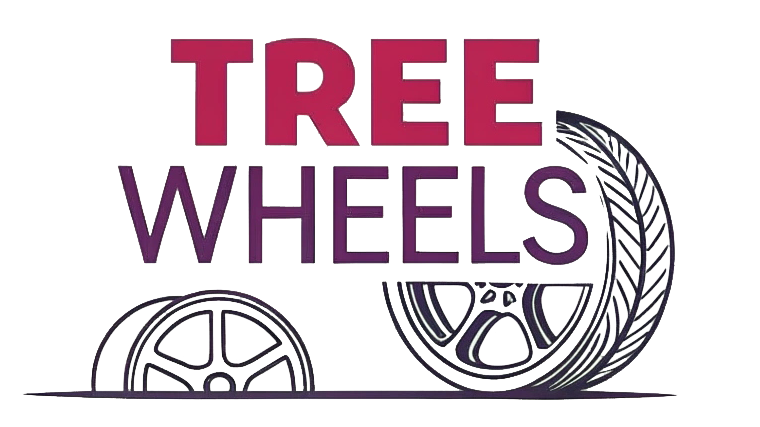Putting the wrong tire on your rim is like wearing shoes that don't fit - uncomfortable and potentially dangerous. Many car enthusiasts worry about tire-rim compatibility, especially when upgrading or replacing either component.
To determine if a tire will fit a rim, check three key measurements: rim width, diameter, and offset. The tire's sidewall displays numbers like "225/45R17" where 225 is width in millimeters, 45 is aspect ratio, and 17 is the rim diameter in inches. The rim width must be within the tire manufacturer's recommended range for that tire size.

Understanding tire and rim compatibility isn't just for mechanics. It affects your car's performance, safety, and even fuel economy. Let's explore how to ensure your tires and rims work together perfectly.
How Do I Know if My Tires Will Fit My Rims?
Facing a tire replacement can be overwhelming with all those numbers and specifications. Many drivers worry about getting it wrong and damaging their expensive rims or compromising safety.
To check if tires will fit your rims, look at the tire code (like 225/45R17) and match the last number (rim diameter) with your rim size in inches. Then verify the rim width falls within the recommended range for that tire size—typically listed in the tire manufacturer's specifications or a tire compatibility chart.

Understanding tire specifications is simpler than it looks once you break down the code. Let's decode a standard tire marking like 225/45R17. The first number (225) represents the tire width in millimeters. The second number (45) is the aspect ratio—the sidewall height as a percentage of the width. The letter R indicates Radial construction, and the final number (17) is the rim diameter in inches.
For rim width compatibility, you'll need to know your rim's width in inches. Every tire size has an acceptable rim width range. For example, a 225mm wide tire might fit rims between 6.5 and 8 inches wide. Using the correct rim width ensures the tire maintains its proper shape, providing optimal handling and wear characteristics.
Beyond diameter and width, you should also consider offset (how the rim positions relative to the wheel hub) and bolt pattern (the arrangement of lug nuts). At Tree Wheels, we provide detailed specifications for all our custom forged wheels, ensuring you can easily match them with appropriate tires for your vehicle.
Can Any Size Tire Fit on a Rim?
When looking at aftermarket wheels, you might wonder if you have flexibility with tire sizes. The mismatch between tire and rim dimensions can lead to mounting difficulties, unsafe driving conditions, or even catastrophic failure.
No, not any size tire can fit on a rim. Tires must have the same diameter as the rim (e.g., 17-inch tires on 17-inch rims) and the tire width must be appropriate for the rim width according to industry standards. Using incompatible sizes can cause safety issues, uneven wear, and poor handling.
](https://treewheels.com/wp-content/uploads/2025/08/image-3-tire-and-rim-size-compatibility-chart.png)
Tire and rim compatibility follows specific engineering guidelines that ensure safety and performance. The diameter match is non-negotiable—a 16-inch tire must go on a 16-inch rim. There's no stretching or compressing to make different diameters work together.
When it comes to width, there's some flexibility, but within defined limits. Every tire size has a recommended rim width range. Going too narrow causes the tire to bulge outward with a rounded profile, potentially leading to poor handling and uneven wear. Going too wide "stretches" the tire, creating stress on the sidewalls and potentially causing the bead to lose its seal.
Here's a simplified compatibility chart for common tire widths:
| Tire Width (mm) | Minimum Rim Width (inches) | Ideal Rim Width (inches) | Maximum Rim Width (inches) |
|---|---|---|---|
| 195 | 5.5 | 6.0 | 7.0 |
| 215 | 6.0 | 7.0 | 8.0 |
| 235 | 6.5 | 7.5 | 8.5 |
| 265 | 8.0 | 9.0 | 10.0 |
As a custom wheel manufacturer, we design our Tree Wheels forged rims with standard specifications that ensure you'll have no trouble finding compatible tires anywhere in the world.
Can I Put 265 Tires on 225 Rims?
After seeing wider tires on similar vehicles, you might be tempted to upgrade your own. But mismatched tire-rim combinations can cause serious problems ranging from poor handling to safety hazards.
You cannot put 265 tires on rims designed for 225 tires. The 265 tire is approximately 40mm wider and requires a wider rim (typically 8-9 inches) than what's appropriate for 225 tires (usually 6-7.5 inches). Using too wide a tire on a narrow rim creates unsafe bulging and poor handling.

The numbers in tire sizes like 225/45R17 and 265/40R17 represent the tire width in millimeters. That 40mm difference is substantial—about 1.6 inches. This additional width requires a proportionally wider rim to properly support the tire and maintain its intended shape.
When a tire is too wide for its rim, several problems occur. First, the tire profile becomes rounded rather than having the optimal flat contact patch with the road. This reduces traction and creates unpredictable handling, especially in emergency maneuvers. Second, the sidewalls experience excessive flexing, leading to premature wear, overheating, and potential failure. Finally, the tire bead—the part that seals against the rim—may not seat properly, risking air leaks or complete bead failure.
Industry standards provide specific rim width ranges for each tire width. For reference:
- 225mm tires typically require rims between 6.0-7.5 inches wide
- 265mm tires typically require rims between 8.0-9.5 inches wide
At Tree Wheels, we can help customers design custom forged wheels with the proper specifications for their desired tire size. Whether you're seeking improved performance, better stance, or enhanced aesthetics, starting with properly matched components is essential.
Can You Put a 16 Inch Tire on a 17 Inch Rim?
When budget constraints hit or you find a great deal on tires, you might wonder if different diameter combinations could work. This question often arises from misunderstanding the fundamentals of tire mounting.
No, you cannot put a 16-inch tire on a 17-inch rim. Tire and rim diameters must match exactly. The tire's bead (inner edge) is designed to seal precisely against the rim of the same diameter. A 16-inch tire is physically too small to mount on a 17-inch rim and would be impossible to install properly.
 mismatch](https://treewheels.com/wp-content/uploads/2025/08/image-5-why-different-diameter-tires-and-rims.png)
The diameter measurement of both tires and wheels is one specification that allows zero compromise. Unlike width, where some flexibility exists within recommended ranges, diameter matching is absolute. The physics and design of modern pneumatic tires make diameter mismatches physically impossible to mount without specialized (and dangerous) modifications.
Let's understand why this is so critical: The inner edge of a tire contains steel bead wires that reinforce the area where the tire seals against the rim. These beads are manufactured to a specific diameter (16 inches, 17 inches, etc.) with minimal stretch tolerance. The corresponding rim has a bead seat with the exact matching diameter.
During installation, the tire bead stretches just enough to slip over the rim edge before seating firmly against the rim's bead seat. A 16-inch tire's bead would be physically too small to stretch over a 17-inch rim edge. Even if somehow forced (which would damage the tire), it would never properly seat against the rim and could not hold air pressure safely.
At Tree Wheels, we clearly indicate the diameter specifications on all our custom forged wheels. Whether designing one-piece, two-piece, or three-piece forged wheels, we ensure all dimensions are clearly communicated so our customers can purchase the correct tire sizes with confidence.
Conclusion
Matching tires to rims requires attention to diameter, width, and offset specifications for safety and performance. Always check compatibility before purchasing either component. Tree Wheels designs all our custom forged wheels to work with standard tire sizes, ensuring you'll never struggle to find the perfect match.



